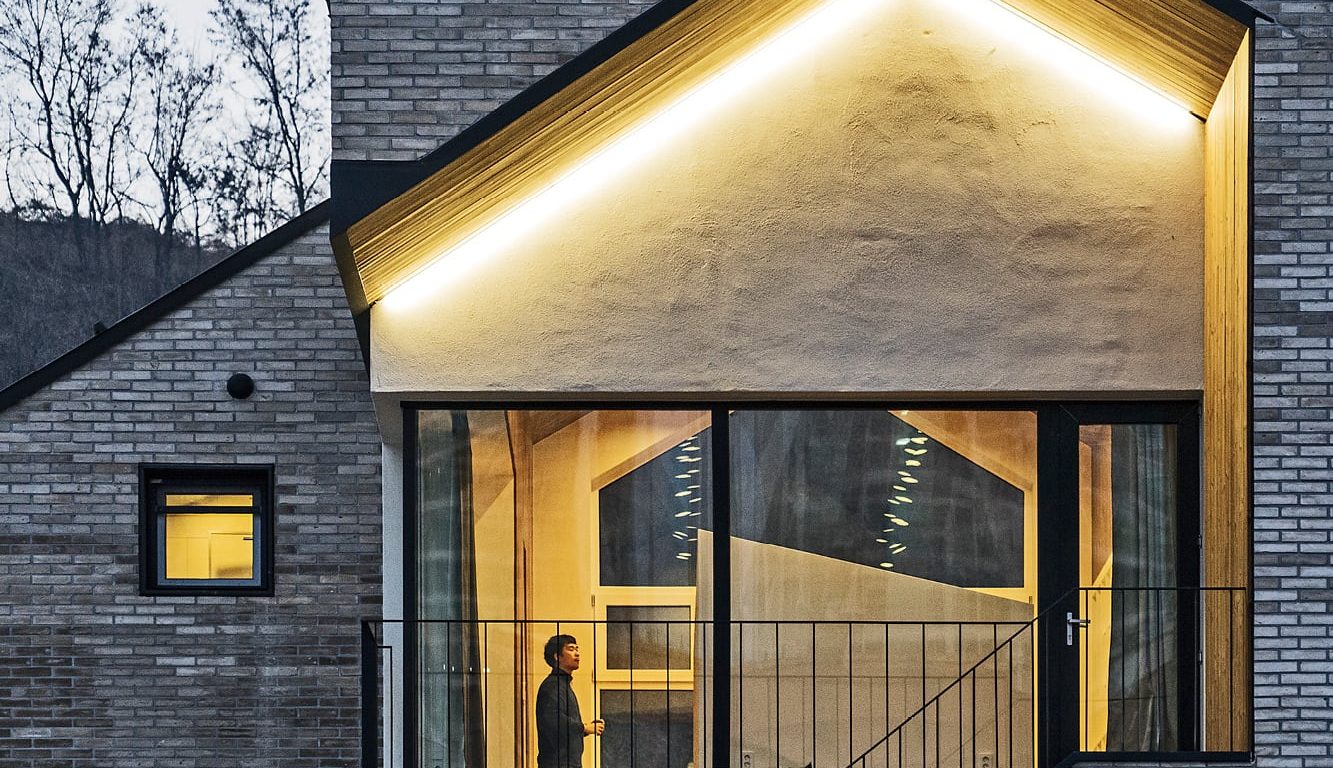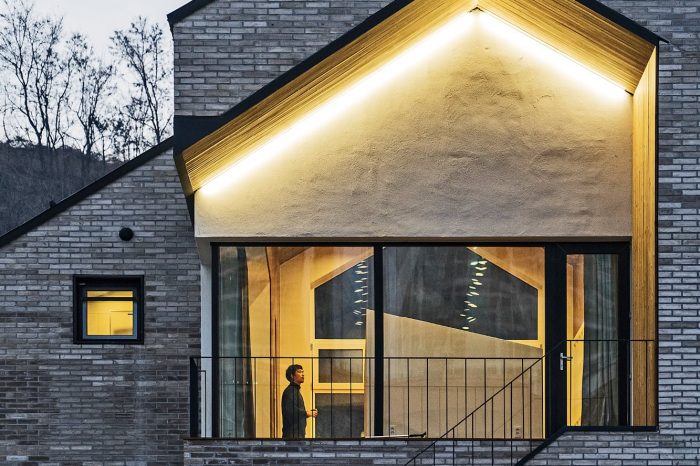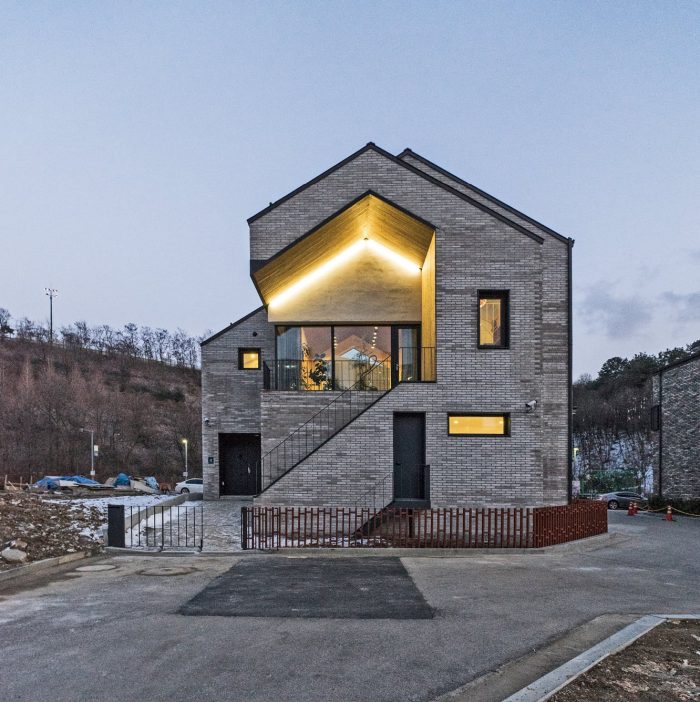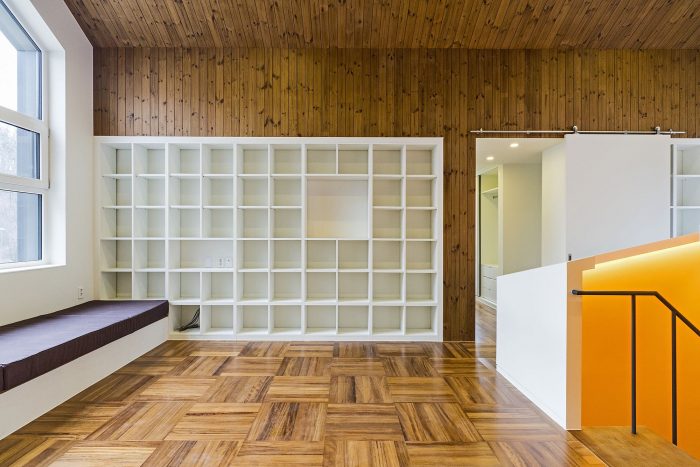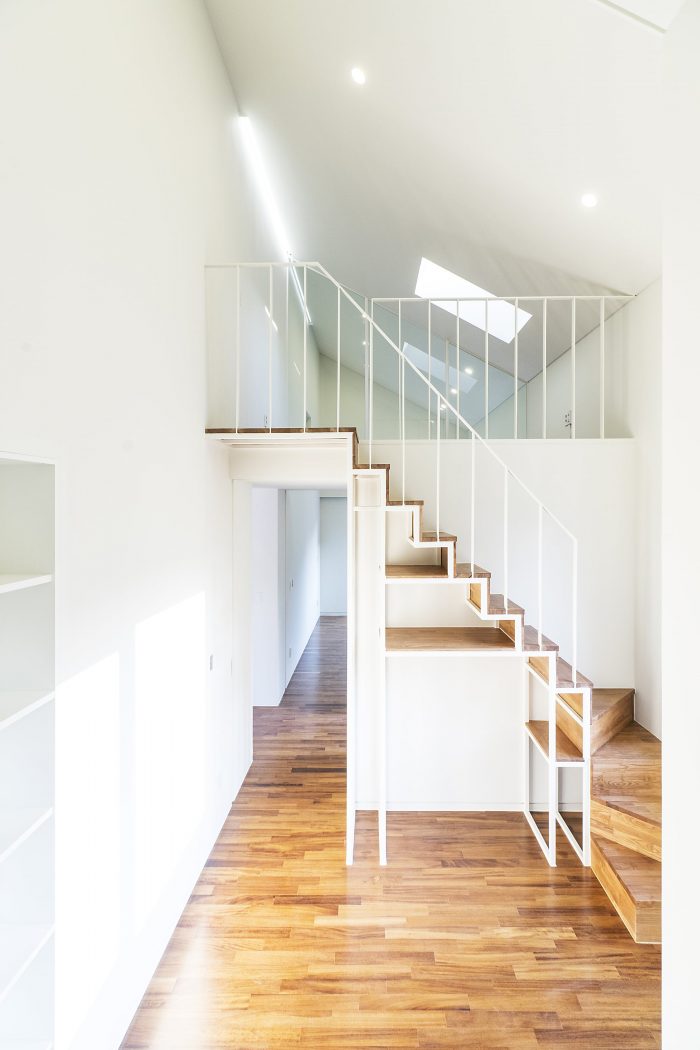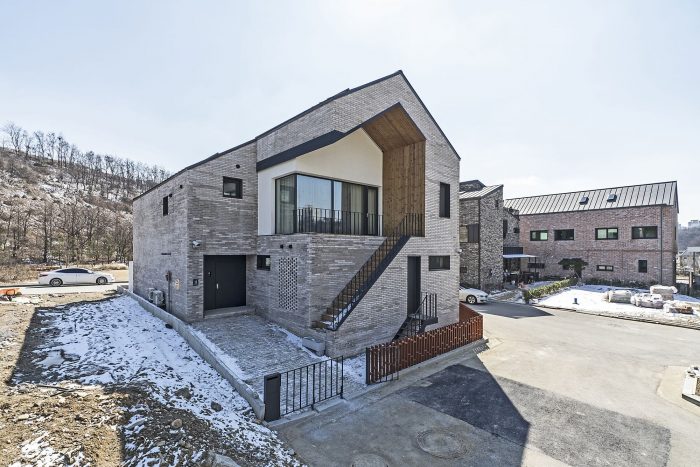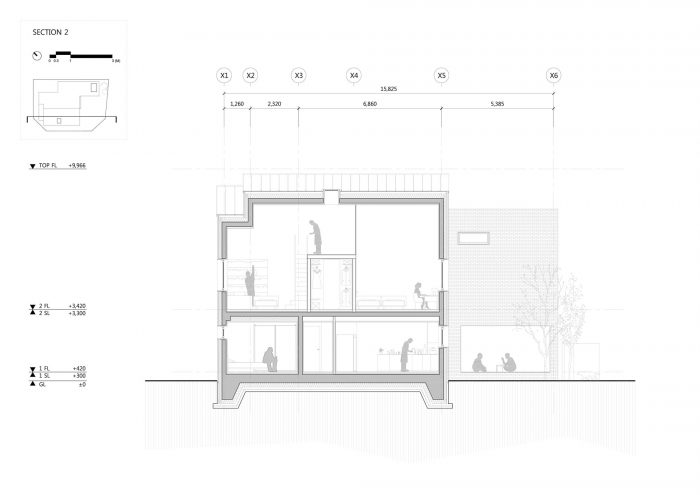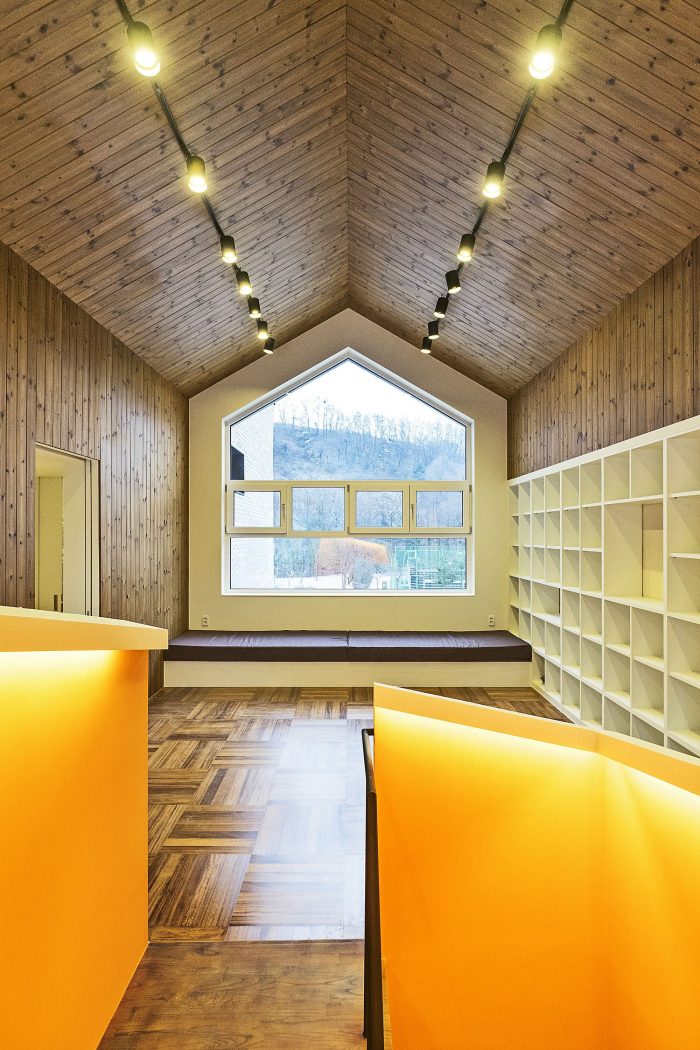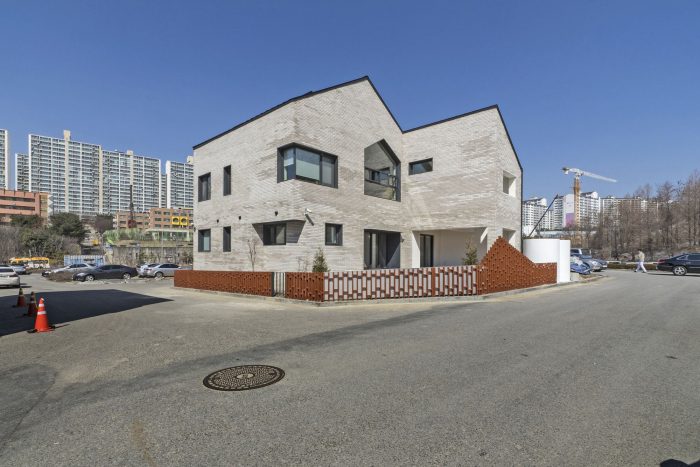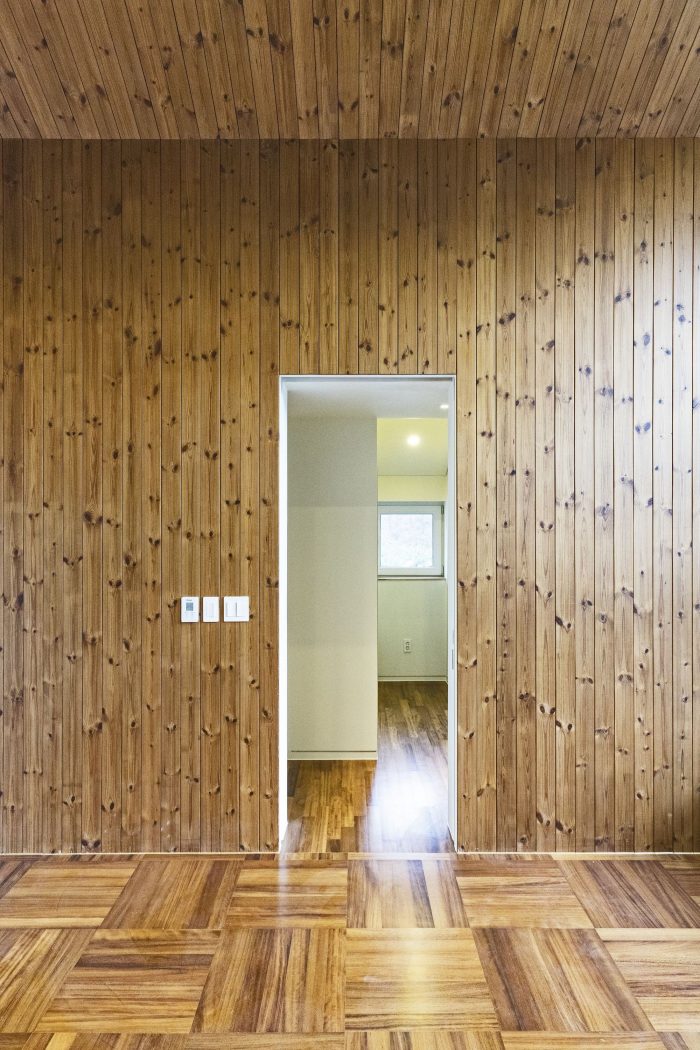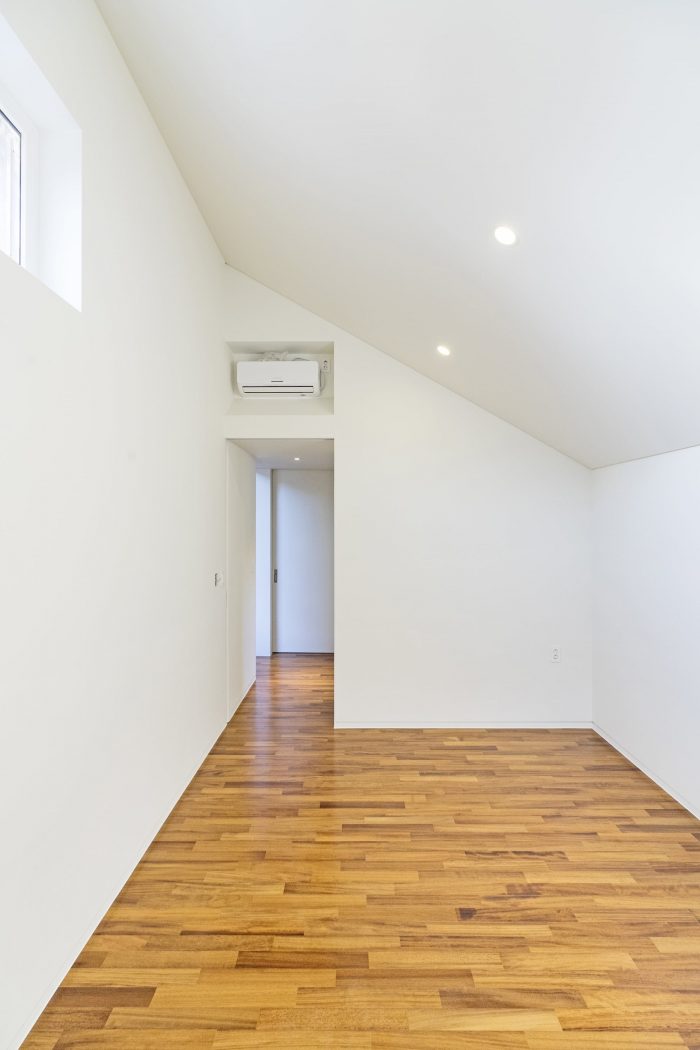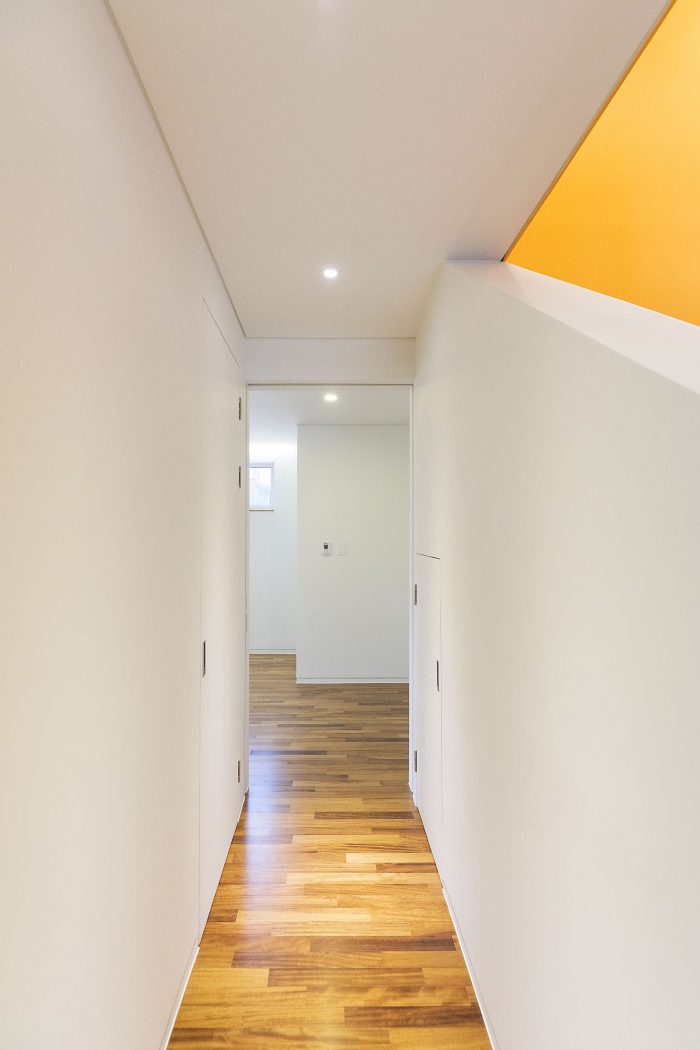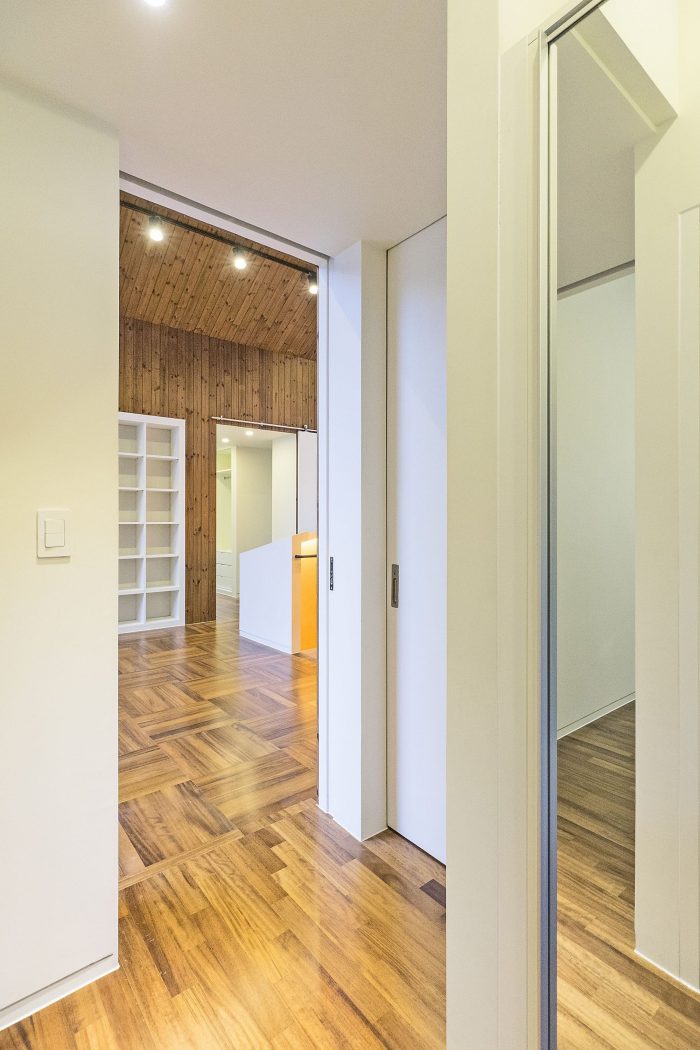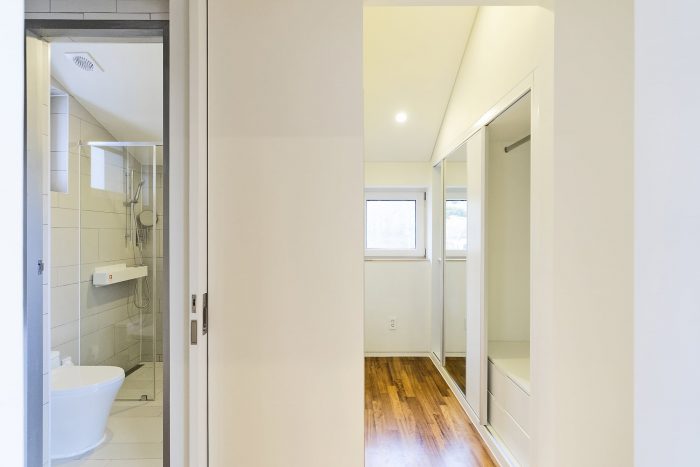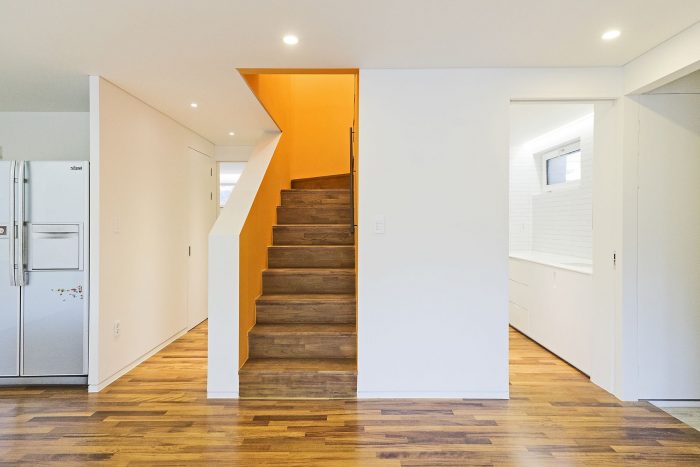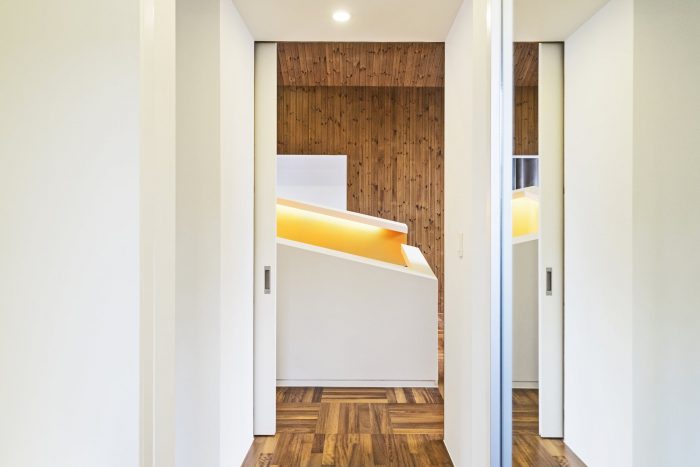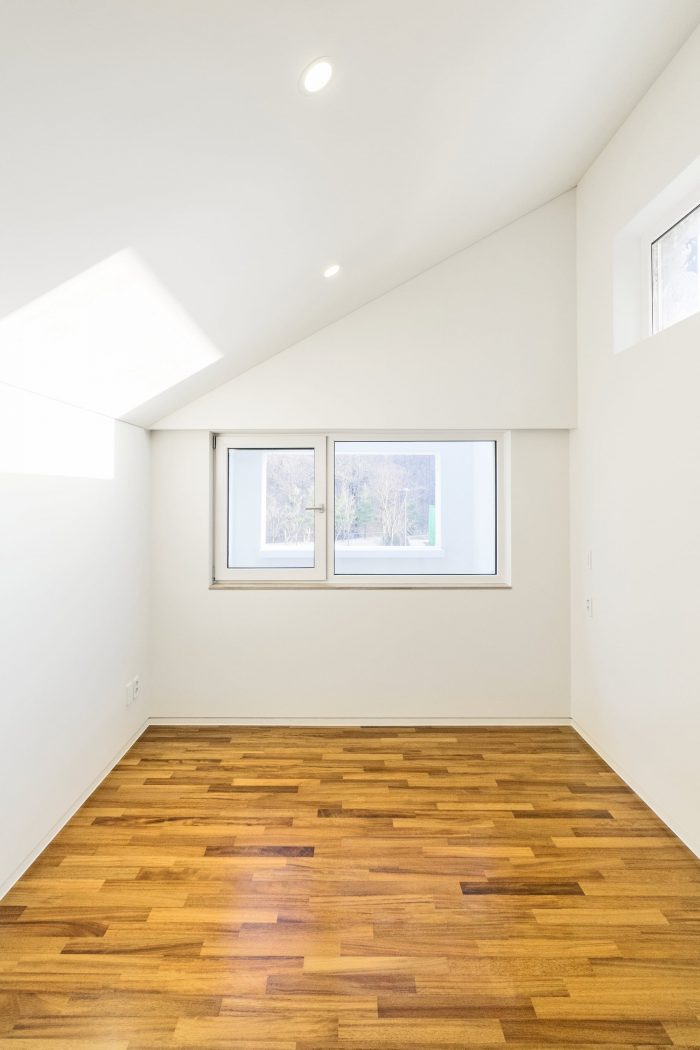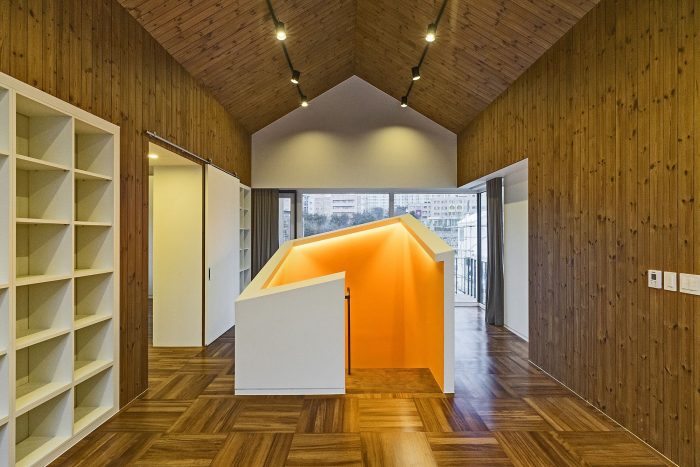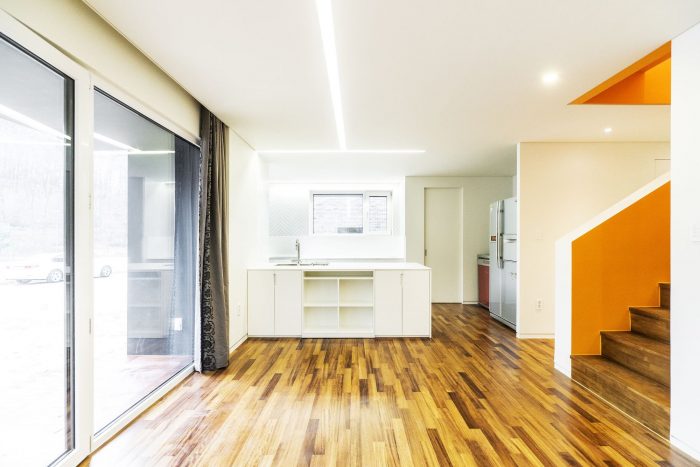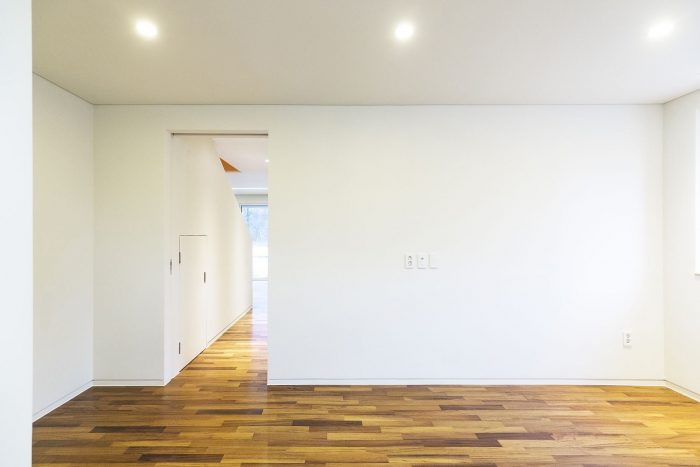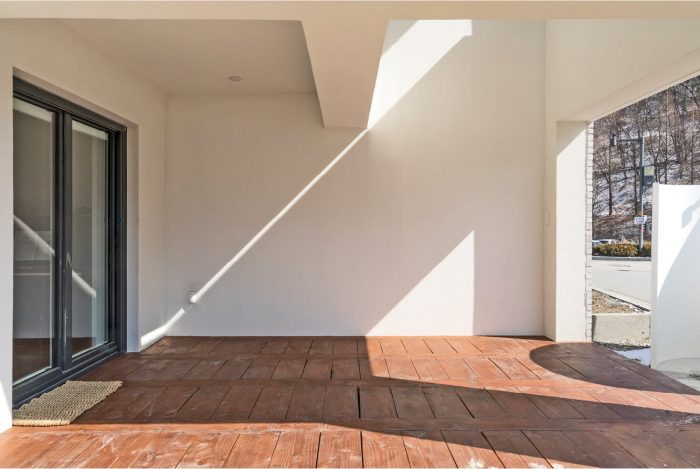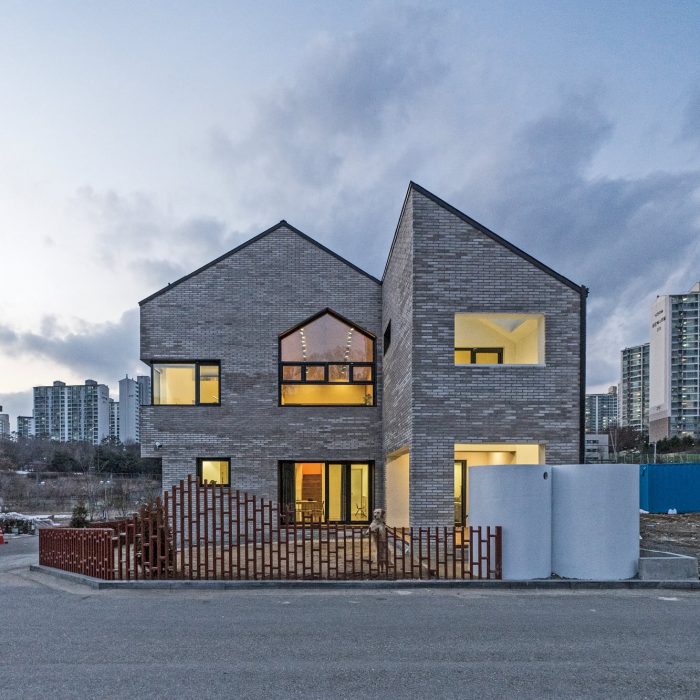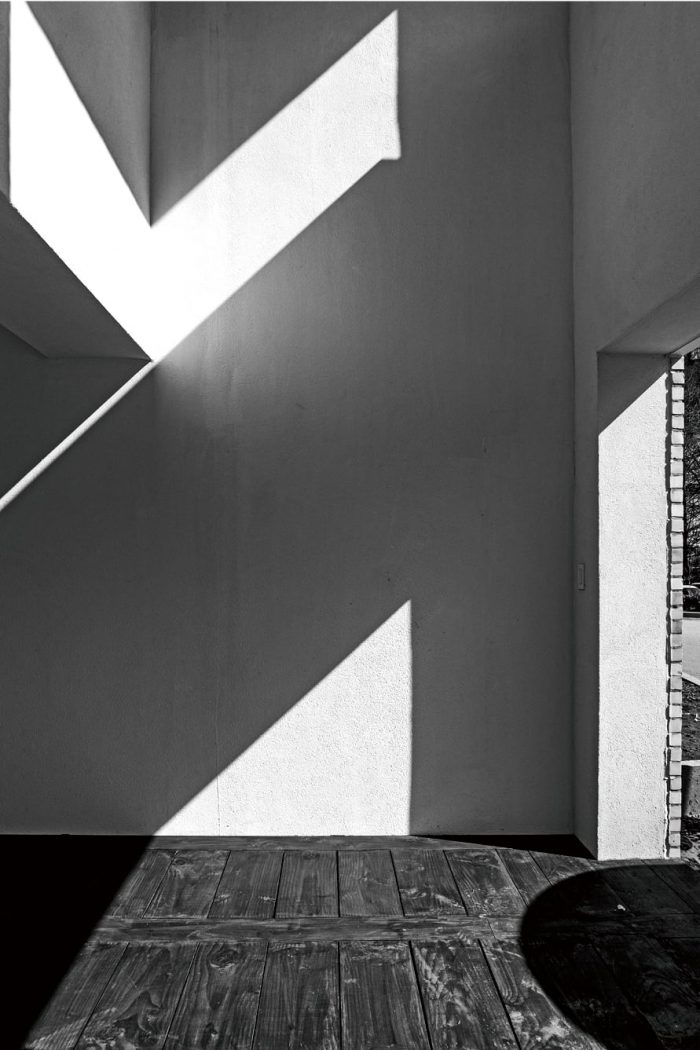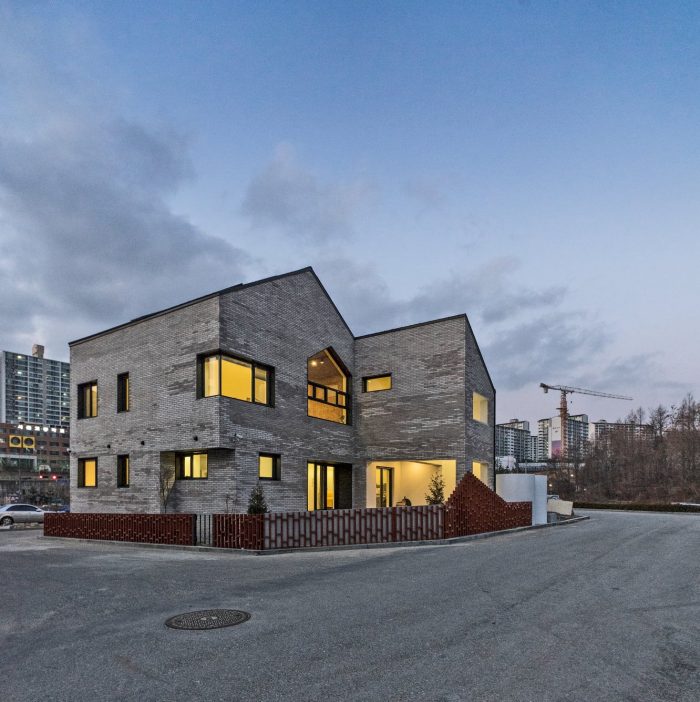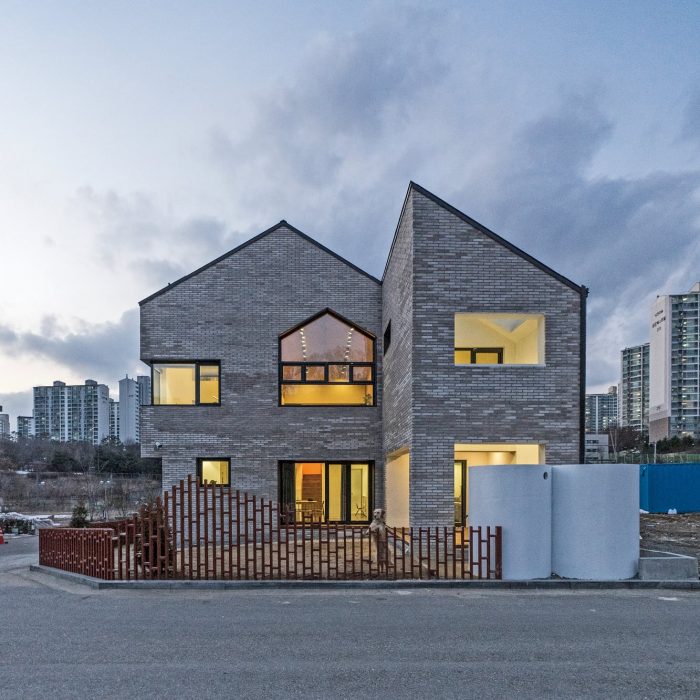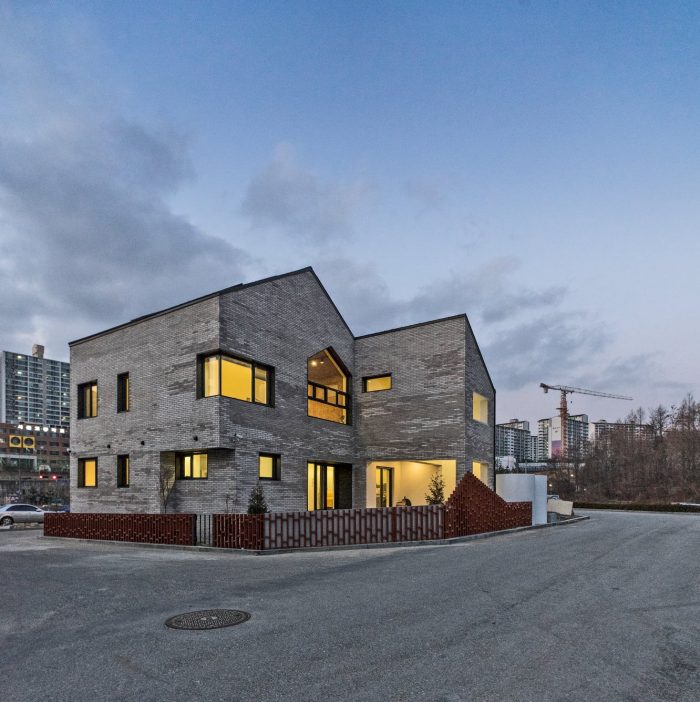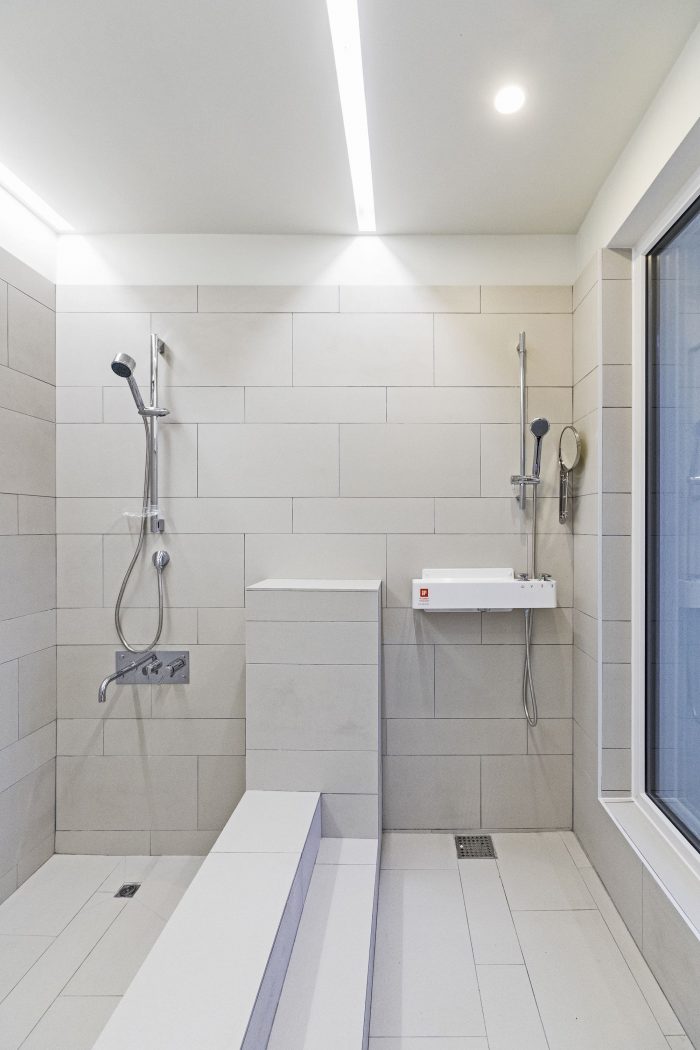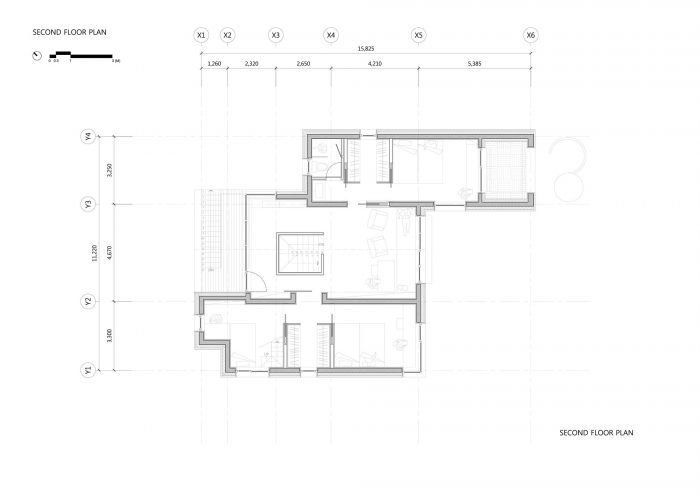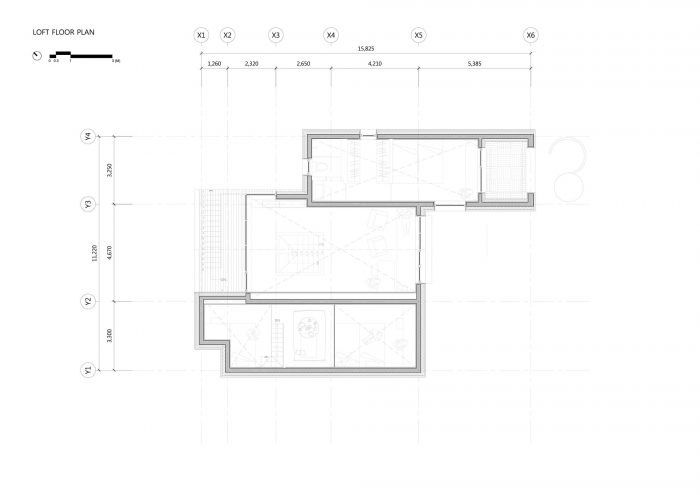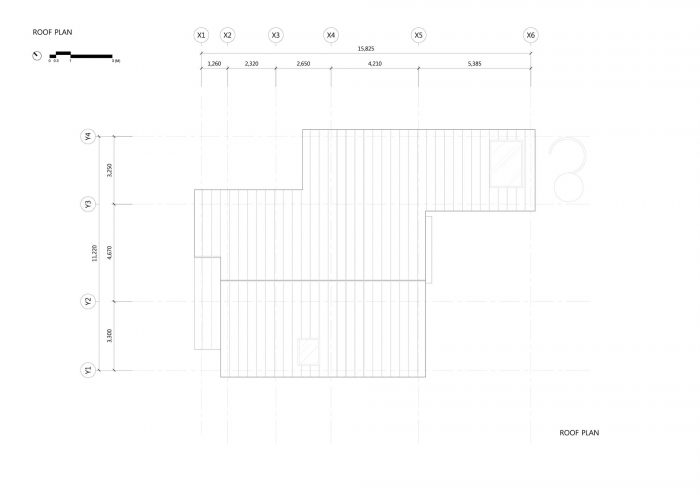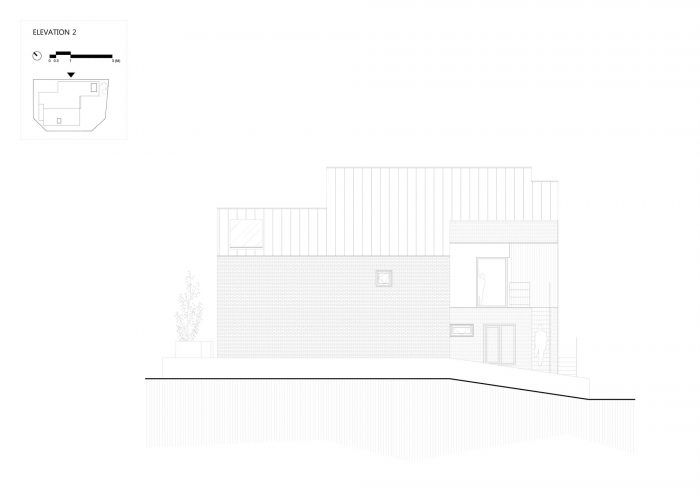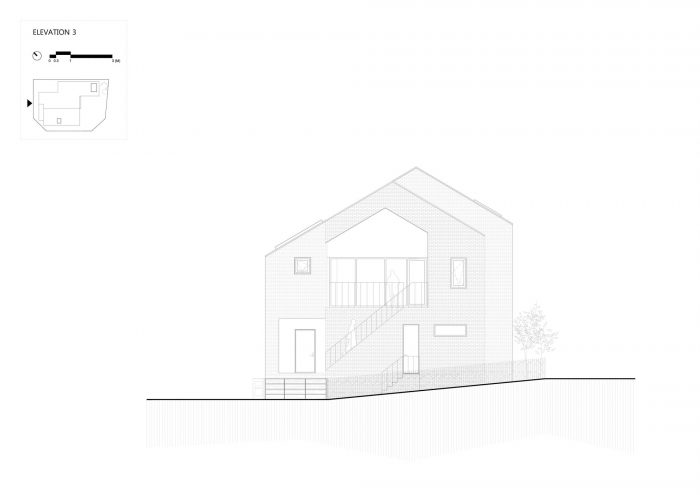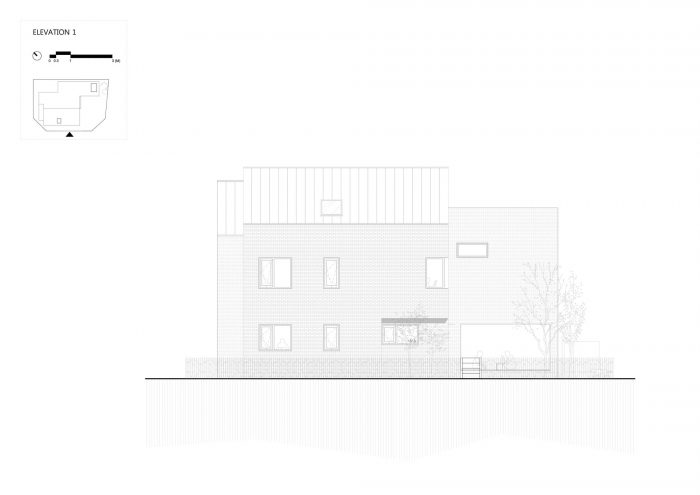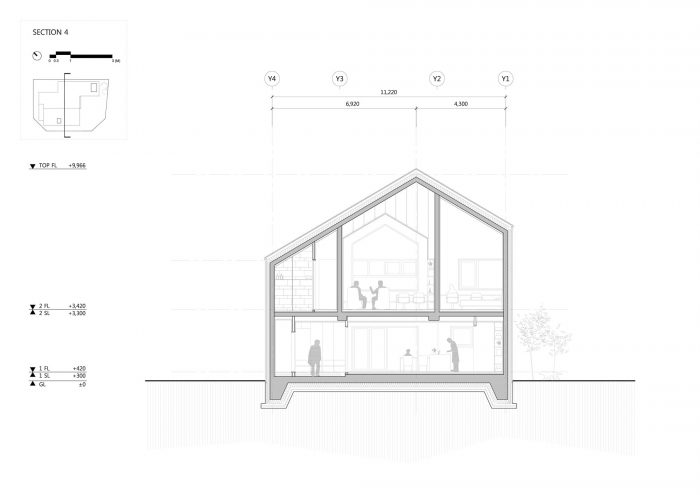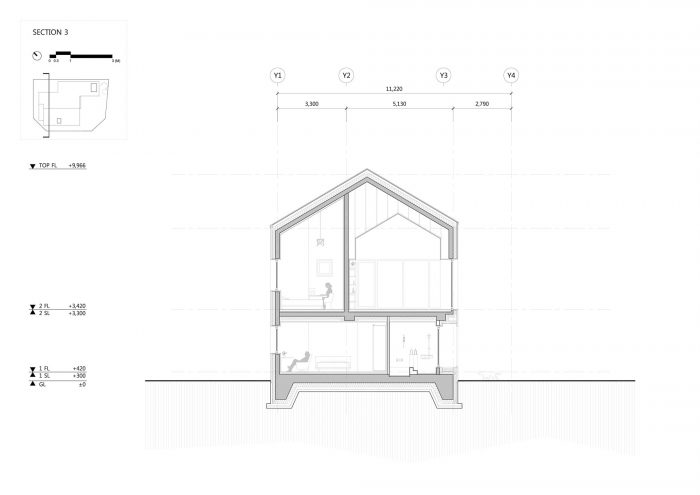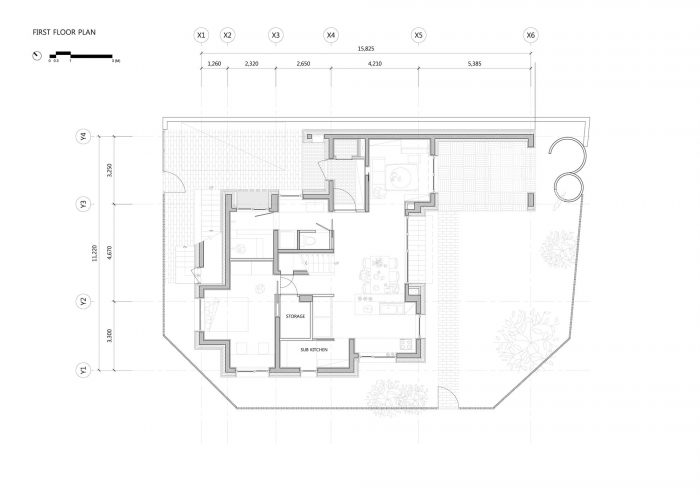一对夫妇来到青年会办公室,分享了他们的愿望,即在阳光充足的地方建造一栋房子,面向南方的舒适公园。他们带着温和的笑容,自然地表现出谦虚和热情。为了表达他们对人的感情,他们梦想有一个 “向人开放 “的房子。对他们来说,房子有 “内部 “和 “外部 “的含义:一个他们的家人和亲戚聚在一起分享生活的地方,以及一个他们的朋友和邻居们随意经过并一起聊天的空间。出于这个原因,他们希望有像开放的休息室或大成这样的空间,这是韩国传统的主地板房间,并希望在他们的新房子里抓住这种开放空间的特点。
A couple visited the JYA office and shared their wish to build a house on a sunlit ground facing a cozy park in its south. With nice gentle smiles, they naturally displayed modesty and warmth. As to show their affection for people, they dreamed of a house that is ‘open to people’. To them, the house had both ‘internal’ and ‘external’ meanings: a place where their family and relatives get together and share lives as well as a space where their friends and neighbors casually come by and chat together. For that reason, they wanted spaces like open lounge or daecheong, a Korea’s traditional main floored room and wished to capture the characteristics of such open spaces in their new house.
因此,我们的工作从想象这个家庭的所有必要空间开始。我们首先想到的是一个家庭房间,在这里人们可以互相见面、休息、看书或一起玩耍或单独玩耍。这个房间将吸收足够的阳光,并捕捉到美丽的夕阳,以及房子前面的小公园和小山的景色。接下来是宽敞的房屋结构,允许家庭成员同时从事各种活动。这方面的一个理想例子是numaru,一个类似阳台的高架阳台,可以给人一种愉快的怀旧和宁静的感觉。基于numaru的概念,我们重新解释了它的空间特征,将其纳入新房子的内部空间,并开始展开其他空间。
As such, our work started from imagining all the necessary spaces for the family. We first thought of a family room where people could meet one another, take rest, read books or play together or individually. The room would absorb sufficient sunlight and capture the view of a beautiful sunset as well as that of a little park and a hill in front of the house. Next was the spacious structure of the house that would allow family members to simultaneously engage in various activities. An ideal example of this was numaru, a balcony-like raised veranda that would give an enjoyably nostalgic and serene sentiment. Based on the numaru concept, we reinterpreted its spacial characteristics, captured them into inner space of the new house and started to unravel the rest of spaces.
反过来,家庭室将位于二楼的中心,两侧分别是主卧室和孩子们的卧室。它将作为一个连接和断开父母和孩子的地方。他们将享受从完全覆盖墙壁的书架上阅读书籍,或在面向南方的窗边长椅上小憩。在房间的中心,有一个通往1楼的楼梯。楼梯创造了一个向下的流线,将家庭室分为大、小、宽、窄的空间,并进一步阻挡了任何不必要的注视。顺着楼梯下到1楼,面向前院的厨房和餐厅进入眼帘。
In turn, the family room was to be located at the center of the 2nd floor, along with a main bedroom and kids’ bedrooms on each side. It would act as a place that connects and disconnects parents and children. They would enjoy reading books from shelves that fully cover the wall or take a nap on a window bench facing south. At the center of the room, there is a staircase that leads to the 1st floor. The staircase creates a downward flow, divides the family room into big, small, wide and narrow spaces and further blocks any unnecessary gaze. Following the staircase down to the 1st floor, a kitchen and dining room that face a front yard come into sight.
1楼最重要的空间是厨房、餐厅和一个小客厅,它们都与前院相连。饭厅通向一个小的天井,然后通向前院,而客厅的一个大的宽门则与一个大的天井相连,这是一个主楼的房间,可以看到整个前院。这样的结构类似于韩国传统的前院,使人们有可能看到孩子们在院子里玩耍,并与路过的邻居打招呼。孩子们不仅可以在院子里玩耍,还可以在屋外的公园里玩耍,只需从侧门出去就可以了。因此,这个开放的院子将真正成为一个游戏和交流的场所–至少对那些快乐的孩子来说是这样。
The most important spaces on the 1st floor are a kitchen, dining room and a small living room, all of which are connected to the front yard. The dining room leads to a small toenmaru, then to the front yard while a big wide door of the living room is linked to a daecheongmaru, a main floored room that captures the whole sight of the front yard. Such structure resembles that of Korea’s traditional front yard, making it possible to watch kids play in the yard and greet neighbors passing by. Children could play not only in the yard but also in the park right outside the house by simply going out through its side door. As such, this open yard would genuinely act as a place of play and exchange—at least to those joyful children.
拥抱这些空间的房子是以一种相当简单的形式建造的。它的外表也是用砖头完成的,颜色微妙,反映了客户的谦逊品味。尽管如此,其客厅的裸露结构创造了一个动态的对角线,有趣地从不同的角度为房子增加了不同的形象。
The house that embraces these spaces is built in a rather simple form. Its exterior is also finished with bricks in subtle color that reflects the modest taste of the client. Nonetheless, an exposed structure of its living room creates a dynamic diagonal line, interestingly adding different images to the house from different angles.
这对夫妇和他们的三个儿子梦想有一个 “向人们开放 “的房子,他们遇到和交流的人远远超过我们的预期。三个孩子的身影遍布阁楼、家庭室、客厅和浴室,随时欢迎他们的新朋友来家里。现在父母在房子里呆的时间更多了,也更经常见到更多的人。
The couple and their three sons who dreamed of a house ‘open to people’ encounter and exchange with a far more people than we expected. The three kids are all over the attic, the family room, the living room and the bathroom, and their new friends are welcome to the house anytime. The parents now spend more time in the house and meet more people more often.
由于房子会 “像 “住在里面的人,我们想建造一个像客户家庭的房子–一个简单的小房子,热情地拥抱和欢迎人们。怀着真诚的希望,毫无疑问,任何尚未在房子里捕捉到的东西,最终都会被这个家庭日常生活的充实和丰富所填充。
As a house would ‘resemble’ people who reside in it, we wanted build a house that resembles the client family—a simple modest house that warmly embraces and welcomes people. With sincere hope and no doubt, anything that has not yet been captured in the house will be eventually filled with the family’s fullness and richness of their daily lives.
Architects: JYA-RCHITECTS
Area : 222 m²
Year : 2016
Photographs :Hwang Hyochel
Manufacturers : Lunawood, VEKA, Hanyang Tile
Other Participants : JD Construction
Architect In Charge : Won Youmin, Jo Janghee
City : Yongin-si
Country : South Korea

